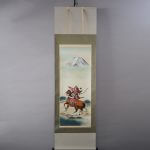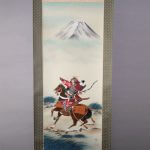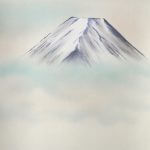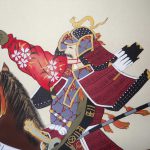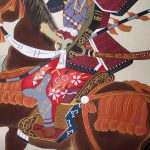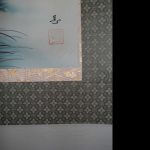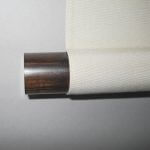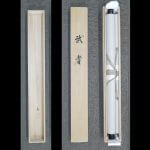Kakejiku Hanging Scroll: Armoured Warrior / Nakayama Jin - Musha
- Product ID
- B0045
- Name
- Nakayama Jin
- Profile
A Japanese-style painter. In 1927, born in Aichi pref. Specialized in Buddhist paintings and flowers & birds paintings. Member of the Tōyō Bijutsu-kai.
- Size
- 601mm x 1876mm
- Roller End Material
Redsandalwood- Material of the Work
- Silk
- Price
- JPY 25,000
- Stock Condition
- In stock
- Payment: Click the Paypal Mark
- Duty and Taxes
Import duty and taxes are beyond our control and may apply to your shipment. Please noted that these fees are the responsibility of the buyer.
- Description
The Japanese have a custom of holding a variety of events praying for the healthy growth of boys on the day of “Tango-no-sekku.” This is on May 5 and is a national holiday called “Children’s Day.” In a few regions, it is celebrated on June 5th, following the old lunar calendar.
The kakejiku (hanging scroll) of a musha (armoured warrior) painting is often displayed in a tokonoma (alcove) on the day. This is because parents and grandparents hope that the male child will be strong like a musha.
This is a kakejiku with a painting of a musha by Nakayama Jin. The depictions of splendid armour, a lively horse, and magnificent Mt. Fuji are designed to make the musha appear stronger to the viewer. This is a work which we would really like to display on the day of Tango-no-sekku.


